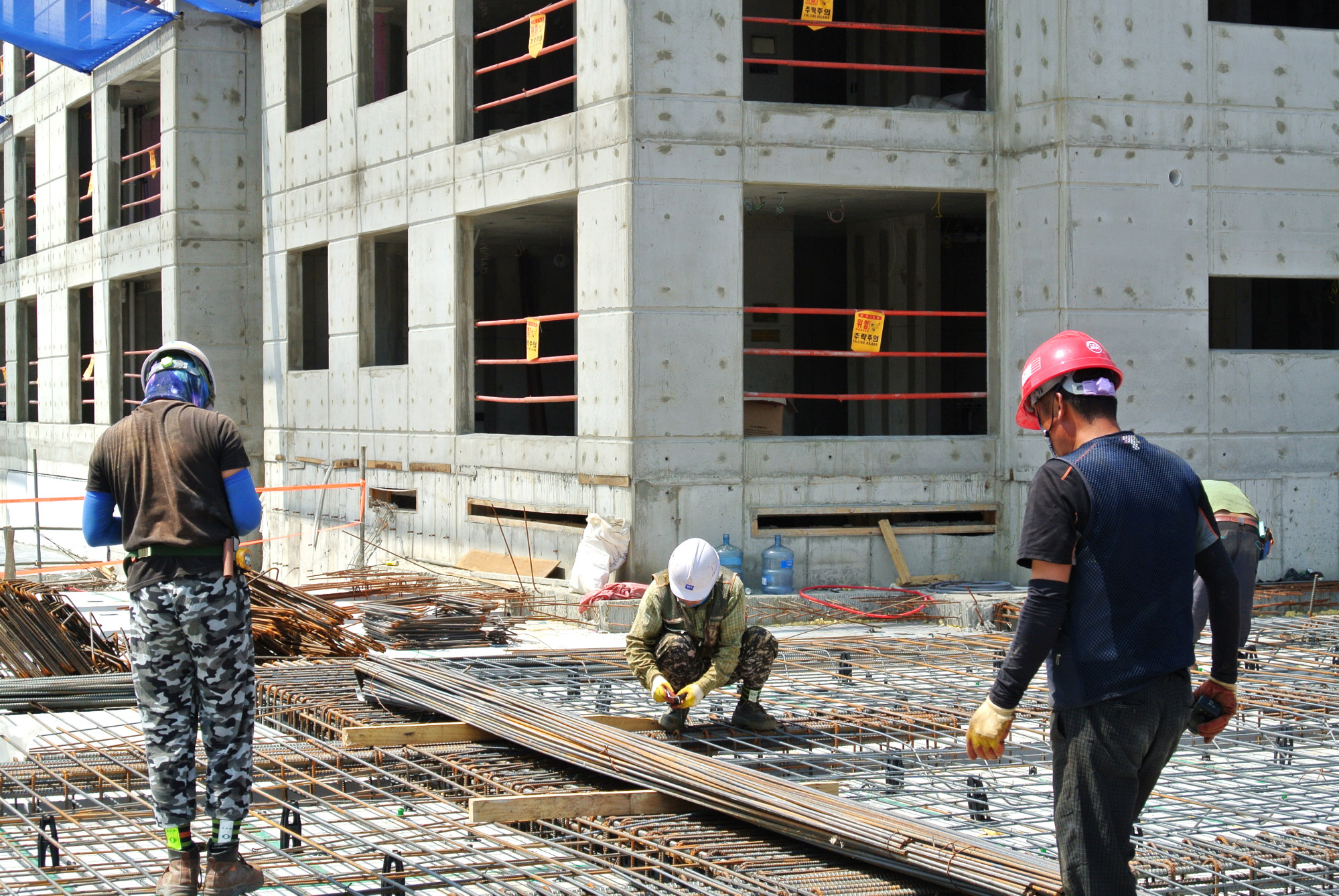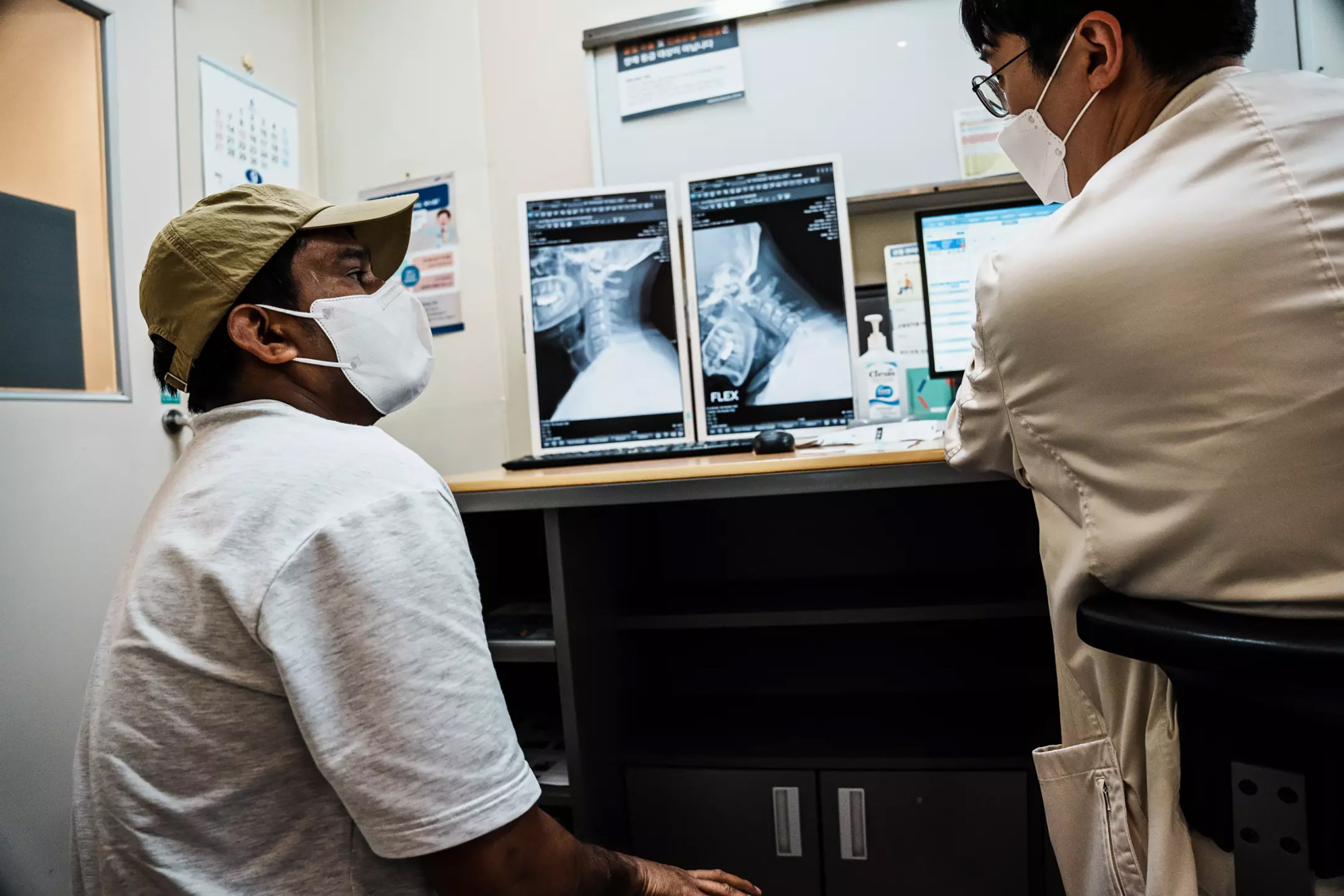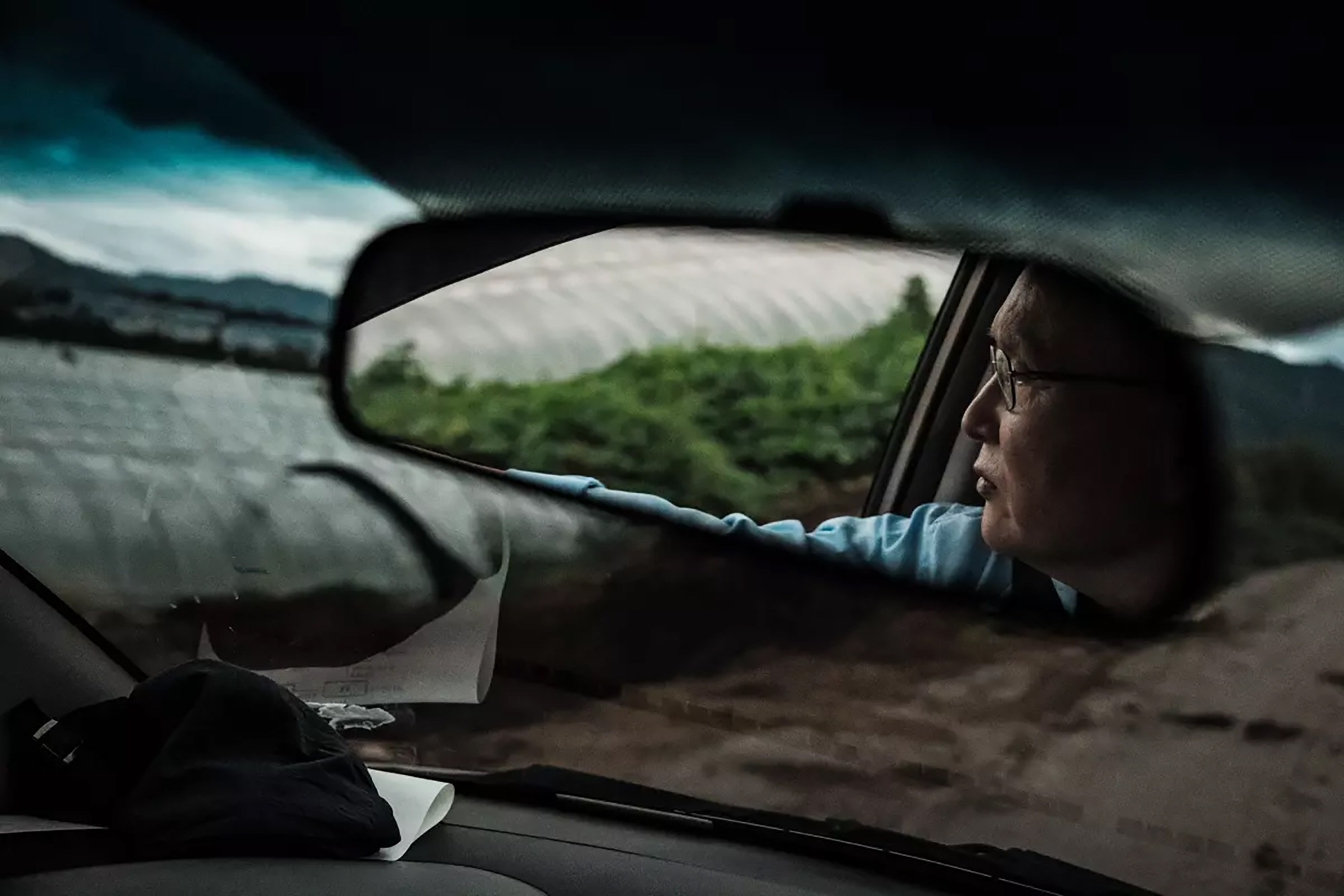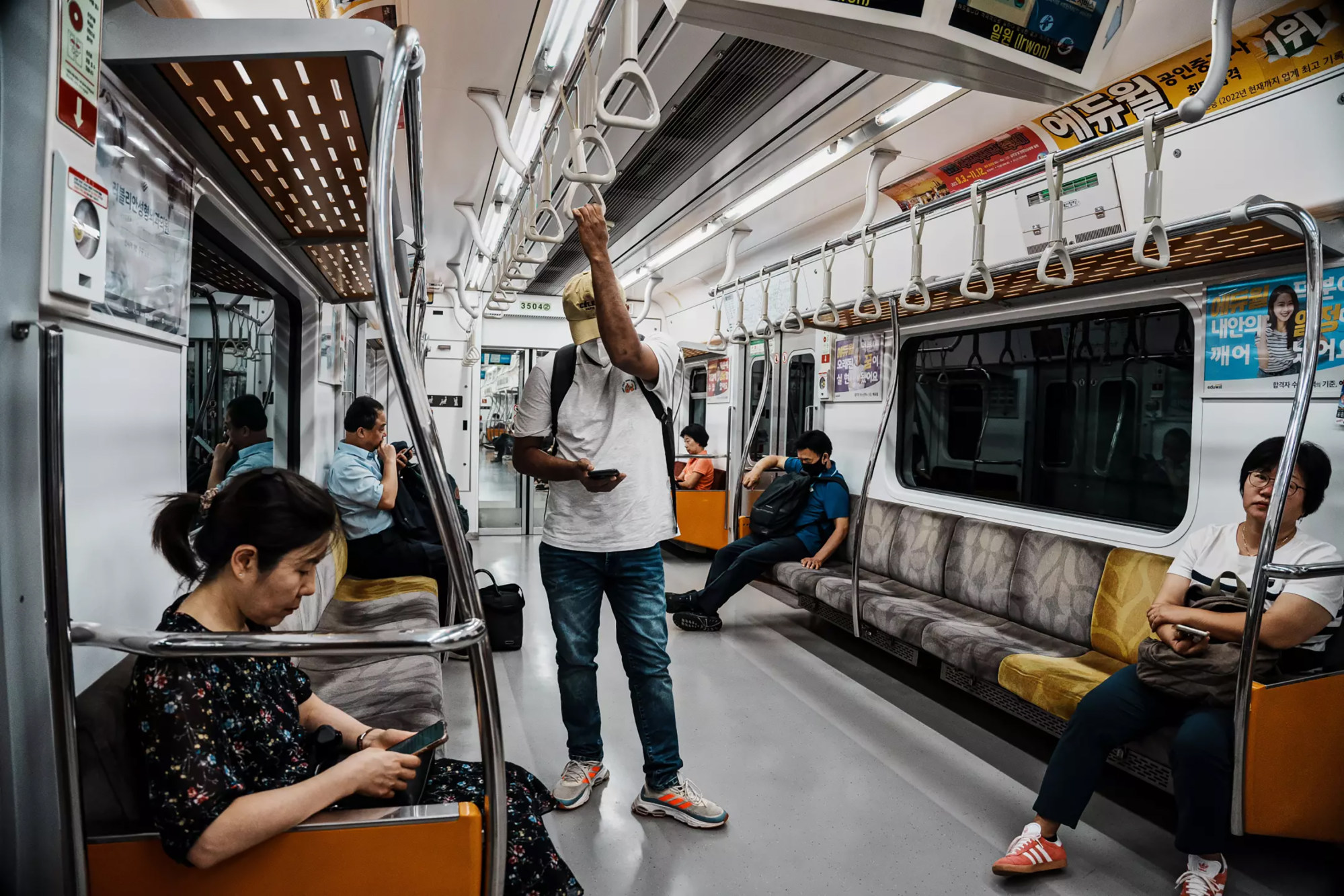
Amid a labour crisis, South Korea turns to migrant workers. Why are they more likely to die on the job?
- South Korea’s migrant programme is under scrutiny for what critics say is failure to guarantee safe working conditions
- Changes to the labour law make it more difficult for migrants – mostly from Cambodia, Nepal, Indonesia – to transfer out of workplaces to which their visas are tied
In Bangladesh, Ajit Roy graduated from college with a chemistry degree, hoping to become a doctor or civil servant. But a run of bad luck derailed those dreams, sending him to look for work overseas.
He wound up at a farming machinery factory in South Korea. Six days a week, over shifts as long as 12 hours, he stood in front of a rack of metal cylinders, degreasing their surfaces with paint thinner and buffing them with a handheld grinder.
It wasn’t long before he began to have trouble breathing, and after nine months on the job, he found himself unable to walk without gasping for air. A doctor diagnosed him with a deadly lung disease that testing later suggested was related to his job.
“I would go through the motions of breathing but feel like I wasn’t getting any oxygen,” said Roy, 41.

For decades, South Korea resisted admitting large numbers of immigrants, but a deepening labour shortage spurred by the world’s worst population collapse left it with little choice.
Roy and the other workers at his factory had been recruited through a programme known as the Employment Permit System, which has become the country’s most important stopgap against the crisis. The EPS, which included 370,000 workers at the end of last year, is on track to add 120,000 more this year – up from 56,000 in 2019.
Cambodia, Nepal and Indonesia send the most migrants. The vast majority work in manufacturing, where the labour shortage is most severe. The sector is expected to need an additional 300,000 workers by 2030.
But as the migrant programme ramps up recruitment, it has come under scrutiny for what critics say is failure to guarantee safe working conditions.
Government data show that foreigners made up roughly 9 per cent of the manufacturing workforce in 2021 but accounted for 18 per cent of its 184 accidental deaths.
The criticism has focused on the powers the programme gives to employers, which makes it difficult for migrants to seek other jobs or protest against unsafe working conditions.
“It essentially allows local employers to hold migrant workers hostage,” said Choi Jung-kyu, a migrant rights lawyer at the forefront of the campaign to reform the programme.

The government, however, has suggested that the programme suffers from the opposite problem: it has given migrants too much freedom.
According to the labour ministry, nearly a third of migrant workers transfer out of their original assignments within a year, and this is undercutting the programme’s mission.
As a result, it recently announced a series of measures – including a rule limiting transfers to certain regions – that make it harder for migrant workers to leave rural areas, where labour shortages are most severe.
“The EPS issues work visas to migrants on the assumption that they will work in these sectors suffering shortages,” the ministry said. “The basic rule is for them to stay at these workplaces.”
As for the higher death rate, the labour ministry said migrant workers are clustered in smaller manufacturing companies, which tend to be more dangerous, and that language barriers and a lack of experience also make them more prone to accidents.
“We are working on strengthening health and safety standards across the board,” it said.

South Korea was once an exporter of labour, sending miners and nurses to Germany starting in the 1960s. But by the 1990s, following a period of rapid economic growth, jobs that were dirty or dangerous found increasingly few takers in the domestic workforce.
And so the government began looking outside its borders to fill them.
Its first attempt was a programme launched in 1994 with 20,000 migrant workers. They often arrived deep in debt to unscrupulous middlemen who had recruited them. And because the workers were classified as “industrial trainees”, they fell outside the scope of labour laws, often working long hours in dangerous conditions for half the wages of South Koreans. Many deserted their assignments, leading to a growing undocumented population.
And so in 2004, the liberal administration in power replaced the old programme with the EPS.
Cutting out the middlemen, the government directly recruited workers through formal agreements with 16 developing Asian countries, assigning them to jobs under one-year contracts after a basic Korean language test and medical check-up.
Seoul seeks to hire Philippine helpers in pilot project amid population crisis
The new programme gave migrants equal protection under labour law. But that early reformist spirit was soon eclipsed by conservative administrations that prioritised the needs of employers desperate for workers.
The most significant change was increasing the initial employment contract period from one year to three years. This helped employers retain workers for longer, but made it more difficult for migrants to transfer out of the workplaces to which their visas were tied.
With few exceptions, migrant workers can change jobs only if their employers release them from their contracts – something labour-strapped companies are reluctant to do.
Experts said even for reasons of employer misconduct, such as unpaid wages or safety lapses, the threshold to qualify for a transfer is high and the fine print complicated.
“The early scope of the EPS was far more limited than it is today,” said Chung Byung-suk, who was a senior labour ministry official when it was created. “But over time, it was expanded and corrupted into something very different.”

Ansung Industrial, the company where Roy landed in early 2021, has won government accolades for its exports of equipment like backhoes and tractors. Located two hours south of Seoul in the city of Anseong, it has about 70 employees in South Korea, a factory in China and a warehouse in Dallas.
The company gave him a clean bill of health when he started the job and moved into a makeshift dormitory on the second floor of the factory. Roy worked weekends and any available overtime to make around $2,500 a month, more than 10 times what he could earn for this kind of work back home.
At his workstation, fumes from the paint thinner stung his nose, mixing in with the haze of metal dust emitted by the grinding. “It always smelled,” he said. “You could feel the metal dust go down your throat.”
Roy said that early on he had asked a manager for a respirator but was given a blue fabric mask instead. He wanted to find another job but knew he was stuck at Ansung. An employer’s failure to provide proper protective equipment, while a violation of industrial safety law, is not an accepted reason for a job transfer.
He said he was denied time off to see a doctor for his breathing problems, a manager explaining that “we’re short-handed as it is”.

At a hospital in Seoul that December, Roy was diagnosed with interstitial lung disease, an incurable condition that has been linked to exposure to industrial pollutants. A CT scan showed heavy scarring in his lungs.
Unable to work and sinking into debt from medical bills, including a $2,500 biopsy, Roy took leave from the company to recuperate at a friend’s flat.
In January 2022, with help from the Bangladeshi embassy, Roy filed for workers’ compensation from the government-run Korean Workers’ Compensation and Welfare Service – an extremely rare step for migrants.
Ansung sent a letter to the worker’s comp agency, known as KCOMWEL, saying all of its workers were supplied with industrial respirators and that Roy’s illness was caused by “a personal neglect of his own health”.
When reached for comment, a manager at Ansung declined to answer questions about Roy’s case. “Our only stance is that we are hoping for a quick resolution from KCOMWEL,” he said.

In December 2020, a young Cambodian farmworker named Sokkheng was found dead in the dormitory where she lived in Pocheon, just north of Seoul.
The case easily could have gone unnoticed. Most migrant workers who die without a clear cause are quickly cremated so their ashes can be sent home.
But a group of activists, including Choi and a Methodist pastor named Kim Dal-sung, who runs a local migrant workers’ rights group, tracked down the farm after seeing Facebook posts from other Cambodian workers.
Suspecting Sokkheng might have frozen to death, they pushed for an autopsy and postmortem occupational disease ruling. It showed that she had died from the sudden rupture of her blood vessels, a complication from untreated liver cirrhosis.
The government later ruled her death to be work-related because the heating in her dormitory – a flimsy dwelling made from sheets of synthetic insulator – had broken down, allowing the bitter cold to accelerate her death.
Sokkheng’s death erupted into a national controversy, prompting a visit by a lawmaker to her dormitory and protests by migrant workers.
Overworked, no loo breaks: migrants face cruel conditions at Korean farms
In response, the labour ministry began to grant job transfers to migrants who had been placed in uninhabitable housing. Sokkheng’s employer was fined around $220.
Pointing out that Sokkheng’s death was uncovered by sheer chance, Choi said he believed that a significant number of migrant workers were quietly dying from workplace illnesses, their cause of death simply marked as “unknown”.
Government data lend some support to that suspicion.
Of the 1,942 occupational deaths among South Koreans in 2021, 63 per cent were linked to work-related disease. But for the 138 foreign worker deaths that same year, that figure was 20 per cent.
The government think tank Korea Institute for Health and Social Affairs concluded last year that the disparity probably indicates that disease among migrant workers is being vastly under-reported, in part because of bureaucratic hurdles and uncooperative employers.
Data collected by the Thai embassy on the deaths of its nationals raise the strong possibility that large numbers could be related to workplace illnesses but are never investigated: 40 per cent of the 533 deaths between 2017 and 2021 were attributed to “unknown causes”. That figure was 6.5 per cent for the country’s overall working population.
“These workers are young and healthy when they arrive,” Choi said. “The fact that they are then suddenly dying from unknown causes after coming to Korea raises a lot of questions.”
By the time the worker’s comp agency inspected Ansung Industrial last July, the factory had been completely renovated, with Roy’s old job outsourced to another company.
“Everything dangerous was gone – the chemicals, the dust,” said Roy, who accompanied the agency’s inspectors.
Luckily, Roy did have one important piece of evidence to help establish a link between his working environment at Ansung and his illness.
A year earlier, a fellow Bangladeshi worker put him in touch with Kim, the pastor, who arranged financial assistance for Roy and enlisted the help of a doctor specialising in occupational disease.
Dr Kim Hyun-joo instructed Roy to collect a small sample from the industrial dust collector by his workstation. A laboratory test of the powder he brought back alongside lung tissue from his biopsy showed that both contained silica dust, a carcinogen associated with scarring of the lungs.
If his claim is denied, Roy will probably be sent back to Bangladesh, an outcome he sees as a death sentence because the standard of medical care there is much lower.
“Even if I die, I would rather die here in Korea, where it will be in relative comfort,” he said. “In Bangladesh, death is a very painful process.”

The damage to his lungs is permanent. If his condition worsens, he will need a lung transplant. Part of this would be covered by a workers’ compensation package, but there will still be out-of-pocket costs.
That means, eventually, Roy will have to return to the manufacturing line. “There is nothing else I can do in Korea,” he said.
For now, nearly two years since he filed his claim, he just has to wait.
The fate of migrant workers like Roy is more than just a humanitarian matter.
Other countries like Japan are suffering similar demographic cliffs, and South Korea will have to compete with them to attract migrant workers in the future.
“Nobody is going to want to come here if word gets out that workers are dying in this way,” said Kim Dal-sung. “This is not a problem of individual employers, but of government policy.”

The need for foreign workers will only grow.
With South Korean women now giving birth to an average of just 0.78 children – the lowest fertility rate of any major country and far below the 2.1 needed to maintain the current population – the number of working-age people is expected to fall from 36 million today to 24 million by 2050.
Despite the problems, the migrants keep coming.
Back in Cambodia, 29-year-old Va Chanda earned about $250 a month in a garment factory. After arriving in South Korea in January, she made six times that picking lettuce.
But she said she was beaten with a watering hose for failing to understand instructions in Korean. She managed to escape after a friend helped her call the police and connected her to a migrant shelter, where she has applied for a job transfer.
Still, she said: “I still don’t regret coming here. I just need to find a better job.”


